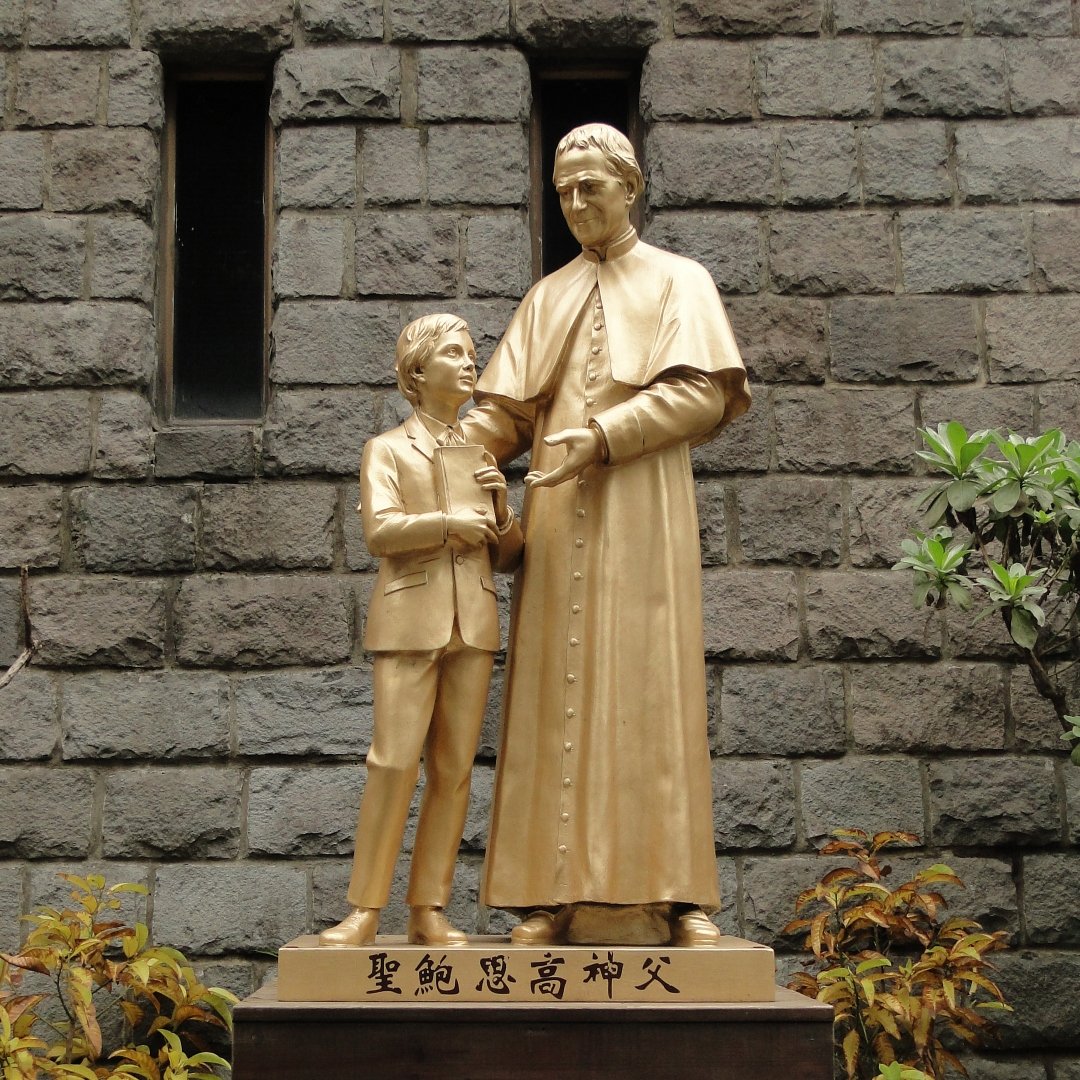
Kathryn Pasker Ineck offers ideas for celebrating saint feast days as a way to recognize the sacred and have some fun along the way!
School started back up this week in our little homeschool after the holiday hiatus and I knew that at least one of my kids was not even close to ready to get back in the groove. I knew this week’s full course load of “real” work was not going to be met with enthusiasm, so I treated Monday like I treat liturgical and saint feast days: with decorations and treats. Before the kids awoke for the day, I set the kitchen table with fun placemats, a juice pouch and box of candy at each place setting, a selection of fun cereal with pieces of fruit as a centerpiece, and had breakfast sausage in the oven to encourage them to follow their noses. Sure enough, all four kids, reluctant or not, were tempted out of bed and ready to learn with appetites sated. (The teens were especially delighted with the juice pouches: who knew?!)
My husband and I started celebrating liturgical feast days with the kids early on for a few reasons: the most compelling, I suppose, was that being home with toddlers and preschoolers can be rather lonely and repetitive. Each day began to look the same as the routine of wake-eat-play-sleep-repeat blurred from one hour to the next, day after day.
Celebrating feast days helped anchor us to the date at hand, and anchor ourselves to the recognition of the sacred. We hoped it would build a rhythm for our family culture, repeatable over the years. We wanted our kids to grow up in the company of the extended family found within the Communion of Saints, but the idea of celebrating them felt daunting: where would we start? And more importantly: how much work (energy!) would be required?!
Feast Days, or Holy Days, are days which are celebrated in commemoration of the sacred mysteries and events recorded in the history of our redemption, in memory of the Virgin Mother of Christ, or of His apostles, martyrs, and saints, by special services and rest from work. (The Catholic Encyclopedia, NewAdvent.org)
This sounds a little overwhelming: the feast days with which I was most familiar were Christmas and Easter, and they required monumental planning and emotional reserves. Saints' feast days, though, are less complicated. Observations of them are quieter, more individualized, and easily celebrated within the Domestic Church.
I started simple: I chose one saint per month and chose a small thing to do that day to commemorate the saint. First on the docket was October 1: St. Thérèse, the Little Flower. I bought a bouquet of roses from the grocery store ( … and one for my mom … and one for my mother-in-law, because why not?) and I pulled out lengths of string and a handful of pony beads from my stash of craft supplies to help the kids make the sacrifice beads popularized by St Thérèse.

Year after year, the kids know that on that one day in October, I always splurge to buy myself roses. I realize that it’s been many years since my kids were preschoolers, but I also realize that they actually love taking time out to celebrate beloved saint-friends, partially because it feels fresh and out-of-the-ordinary, and partially because there is safety and comfort in observing family traditions.
This year, I plan to shake things up a bit and add saints to our calendar. January 31 is the Feast of St John Bosco (also called Don Bosco), an Italian priest from humble beginnings, who had a heart for orphans and juvenile delinquents, a fact that makes me love him right off the bat; I imagine him taking delight in the creativity and spirit of those kids otherwise ignored by society. He was a prolific writer and developed a revolutionary system to raise children, which focused on love and not control. He and his mother had a habit of taking on orphans, and delighted in nurturing them. "My dear boys,” he instructed them, “run, jump, play, make noise, but do not sin.”
As a magician, acrobat, and juggler, and he is often quoted as saying that he would be a clown for Christ in order to win souls. He spoke at length about enlisting help from our Guardian Angels, and he followed the teachings of St Francis de Sales—so much so that he started the Salesian Order!

On St. ohn Bosco's feast day (January 31), in addition to attending Mass, consider the following:
Decorate with a circus theme as a nod to St John Bosco’s hobbies.
- red-and-white crepe paper
- balloons
- popcorn
Play games!
- Ball games
- Circus games
- Board games (Balloon Lagoon is an especial favorite at our house for preschoolers!)
- Obstacle course (with balance beam-walking, hopscotch, jumping rope … and juggling)

Eat soup, in acknowledgment of St John Bosco’s poverty.
- Pasta e Fagioli
- Minestrone
- Zuppa Toscana
Learn with movies and books:
- My Catholic Family: St John Bosco via YouTube
- St John Bosco: Mission to Love via FORMED
- St John Bosco and Dominic Savio by Catherine Beebe
- Any of the 17 books he wrote!
- Coloring pages
Prayer for the Intercession of St. John Bosco
Friend of the young,
Teacher in the ways of God,
Your dedication to empowering the needy inspires us still.
Help me to work for a better world,
where the young are given the chance to flourish,
where the poor’s dream for justice can come true,
and where God’s compassion is shown to be real.
Intercede for me as I bring my needs to you
and to our heavenly Mother, the Help of Christians.
Saint John Bosco,
Pray for us!
Copyright 2022 Kathryn Pasker Ineck
Images: Canva Pro; Bernard Gagnon, CC BY-SA 3.0, via Wikimedia Commons
About the Author

Kathryn Pasker Ineck
Married for more than two decades to her best friend, and mom of four teens, Kathryn finds that life is never boring. She pursues the heart of God--led by His gentle Mother--and relies on the Divine Mercy Chaplet, a desire for chocolate, and an insatiable thirst for reading into the wee hours of the morning. She writes to maintain her sanity at Kathryn Pasker Ineck.


.png?width=1806&height=731&name=CatholicMom_hcfm_logo1_pos_871c_2728c%20(002).png)
Comments